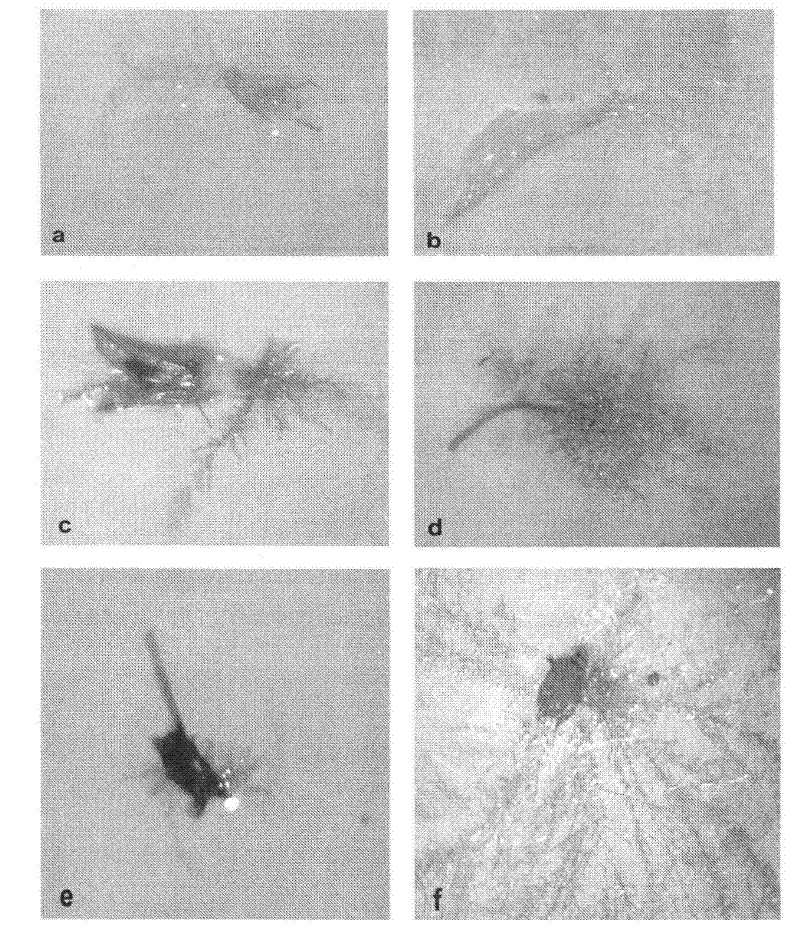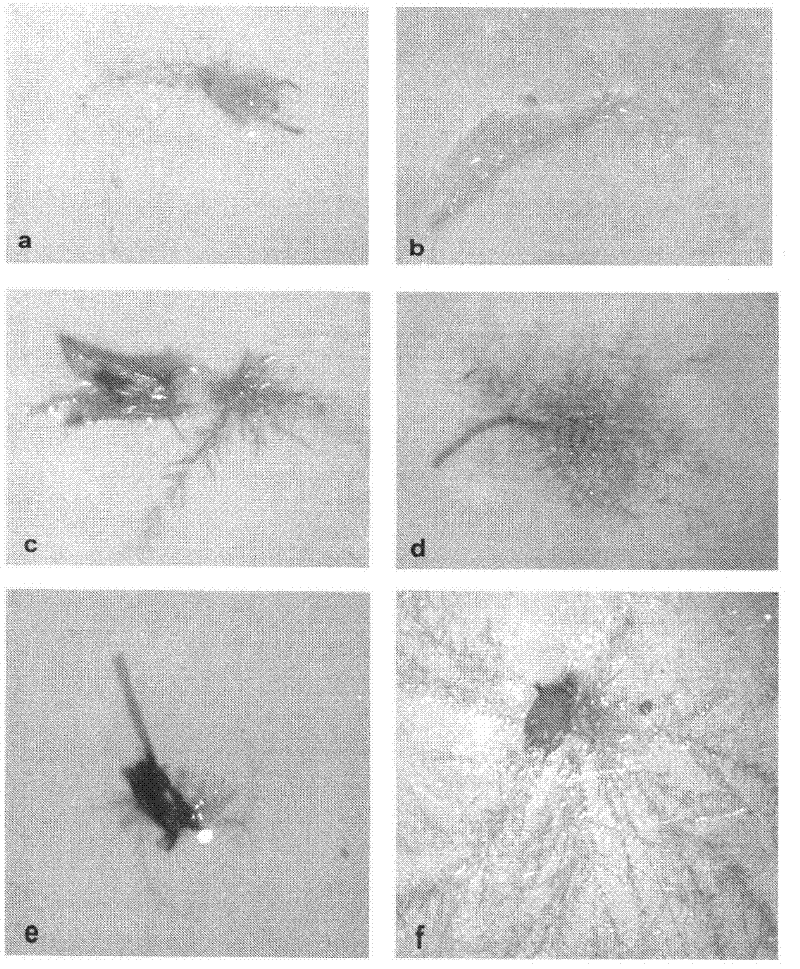A kind of cultivation and preservation method of erythrosa dentata protonema
A technology of erythritis dentatus and cultivation methods, applied in the direction of plant preservation, horticultural methods, botanical equipment and methods, etc., can solve the problems of slow propagation speed of desert mosses, increase the coverage of surface biological crusts, reduce Surface erosion, the effect of enhancing the stability of the sand surface
- Summary
- Abstract
- Description
- Claims
- Application Information
AI Technical Summary
Problems solved by technology
Method used
Image
Examples
Embodiment 1
[0026] Embodiment 1: the culture method of erythrosa dentifera protonema
[0027] The specific training steps include:
[0028](1) Material selection and processing: In the Gurbantunggut Desert, select the well-developed moss crust plaques with Erythrosis dentatus as the construction species, and select some robust Erythrosis dentifera plants; first use tap water Rinse well, and then rinse repeatedly with sterile distilled water; soak and disinfect the cleaned moss plants in 70% alcohol for 20 seconds on the sterile operating table, take them out and rinse them with sterile distilled water for 3-4 times; clean the cleaned moss plants Place it on a sterile operating table and use sterile air to dry naturally; in a sterilized mortar, lightly grind the air-dried moss plants into pieces for later use.
[0029] (2) Inoculation and cultivation: the moss fragments obtained in the above steps were diluted with sterile distilled water, and then inoculated in a container containing BG ...
Embodiment 2
[0033] Embodiment Two: Preservation method of protonema of dentate rib erythritis
[0034] The specific training steps include:
[0035] (1) Place the harvested moss protonema in a cool and ventilated place to air dry.
[0036] (2) The air-dried moss protonema is placed in a sterile sealed plastic bag and stored in a -40°C refrigerator for later use. The photosynthetic activity is represented by the fluorescence value (Fv / Fm) of chlorophyll a, and the concentration measured at room temperature is 2g. L -1 The fluorescence value (Fv / Fm) of the protonema was 0.36±0.01, and its activity was significantly higher than that of the protonema preserved at other temperatures.
[0037] Adopting the method for cultivating and preserving the protonema of E. dentatus provided by the present invention, it is expected that a large amount of artificial multiplication of E. dentata will be carried out, and the artificial rapid cultivation of desert moss and its biological crusts will be real...
PUM
 Login to View More
Login to View More Abstract
Description
Claims
Application Information
 Login to View More
Login to View More - R&D
- Intellectual Property
- Life Sciences
- Materials
- Tech Scout
- Unparalleled Data Quality
- Higher Quality Content
- 60% Fewer Hallucinations
Browse by: Latest US Patents, China's latest patents, Technical Efficacy Thesaurus, Application Domain, Technology Topic, Popular Technical Reports.
© 2025 PatSnap. All rights reserved.Legal|Privacy policy|Modern Slavery Act Transparency Statement|Sitemap|About US| Contact US: help@patsnap.com


